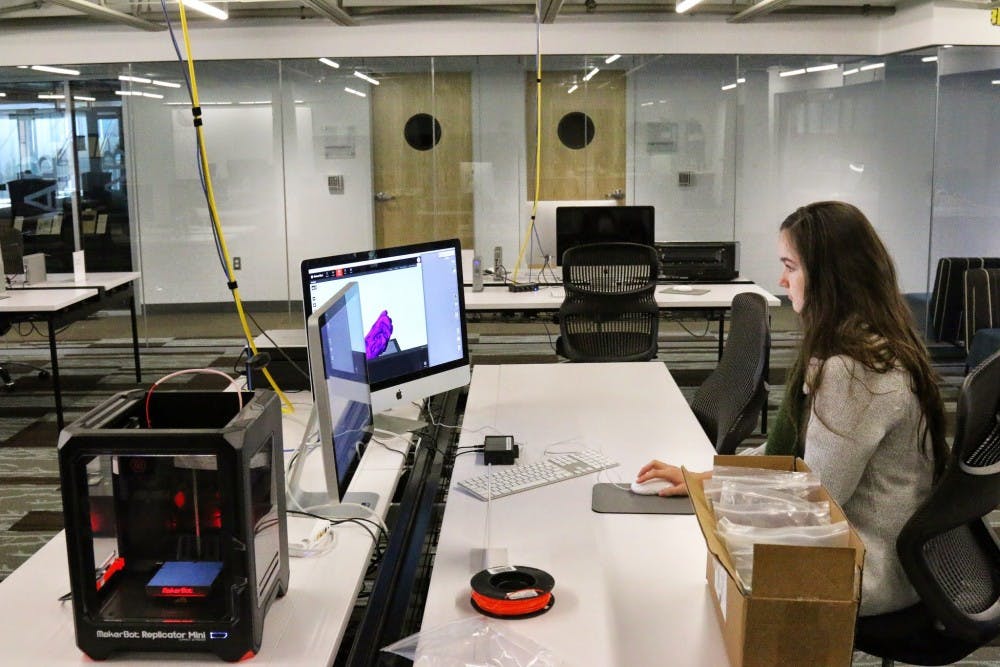Jacob Fuhrer |
Are you a soulless person in need of a heart?
Good news: You can now print one in the Clark Library’s Digital Lab. A heart is just one example of a seemingly infinite number of plastic objects that can be produced with UP’s new $1,300 MakerBot 3-D printer.
As part of a partnership between The Library and the Shiley School of Engineering, the Digital Lab received the printer last Wednesday. The MakerBot printer takes a 3-dimensional model rendered from a computer and prints it using a special type of plastic. It supports up to ten colors, though not at the same time.
“The practical applications would include someone in the engineering department who wants to prototype an object for a class,” Jose Velazco, the Library Digital Initiatives Coordinator said. “Or someone who is just interested in making an object to see how the process works.”
It’s not the only 3-D printer on campus, but it’s the most accessible for students. Engineering students currently have access to their own 3-D printer in Shiley.
The Digital Lab is hosting workshops on Feb. 26 and 27 to help students learn to make their own creations. If a student isn’t skilled in design, that’s not a problem either. Velazco says the printer can use pre-made templates in addition to custom designs.
As for pricing, Valezco admits they aren’t quite sure yet.
“We want to make it accessible to everyone, so I think the pricing for that will be pretty reasonable,” Valezco said.
But old-school 2-D printing has also gotten easier on campus, thanks to Information Services. Starting over a week ago, students have been able to wirelessly upload select documents for printing using Webprint, an online service for sending papers to campus printers already available to students.
It’s a small change, but allowing students to print directly from their own computers saves time by eliminating the need to log on to a campus computer.
Information Services has been working on the project since last summer. Webprint is a side benefit of a larger initiative by IS to get both students and faculty on the same print server, according to Sheila Smith, the academic computing coordinator.
“The advantage is actually having [staff] on the Papercut software system, so now we can track printing for everybody, not just students,” Smith said.
Anthony Ng, sophomore ASUP Senator for Technology Affairs, helped get the word out about the new service.
“I’ve heard a lot of people say that it’s really easy to use,” Ng said.
Ng says printing from Webprint takes less than 30 seconds from start to finish.
The service is still new, and it doesn’t work if the Internet on campus is down.
Smith also says there are limitations to what can be printed and how. For now, Microsoft Word, Excel, and PDF files are all that can be printed, and documents will print double-sided through Webprint until a software update in the future adds single-sided printing. Jacob Fuhrer is a reporter for The Beacon. He can be reached at fuhrer17@up.edu.








